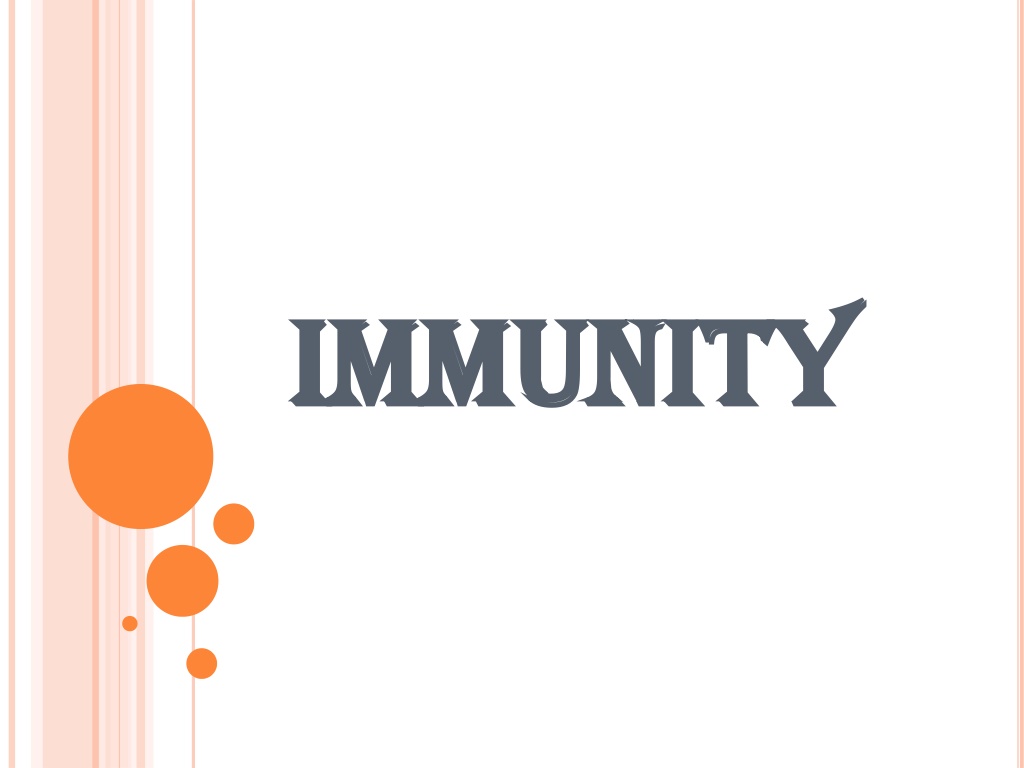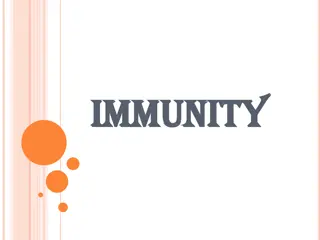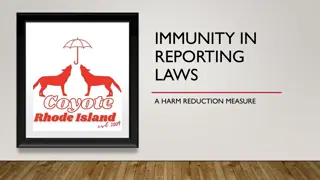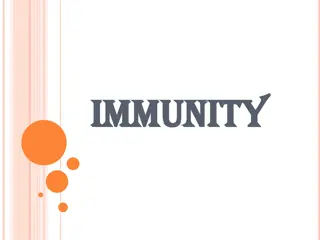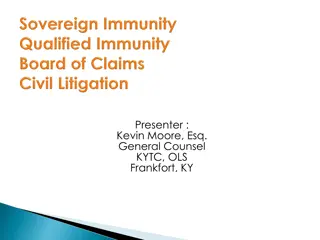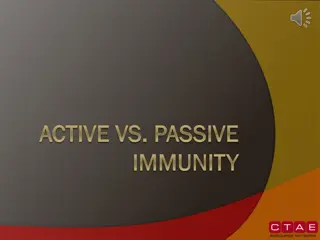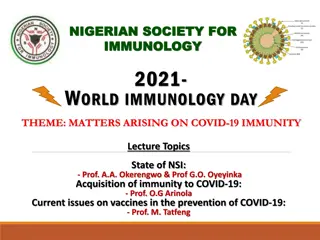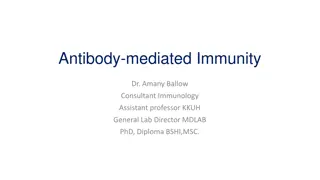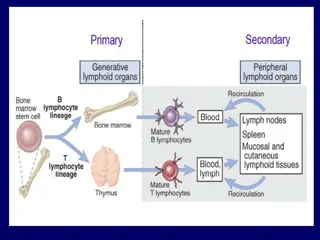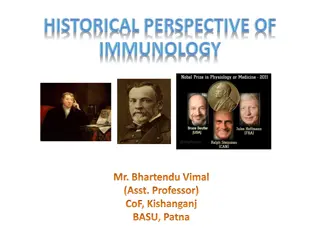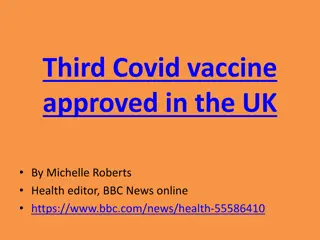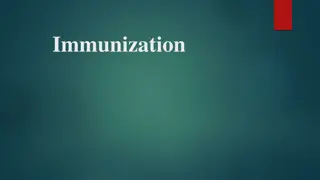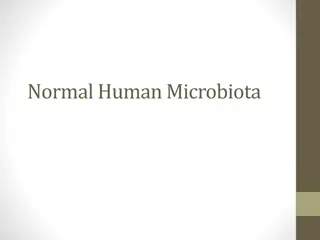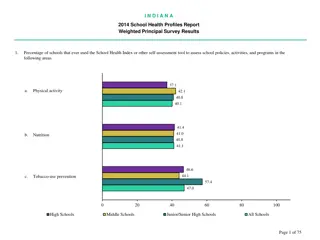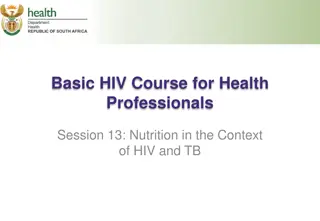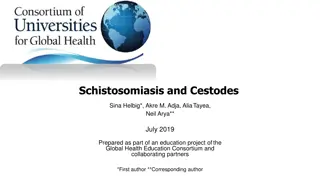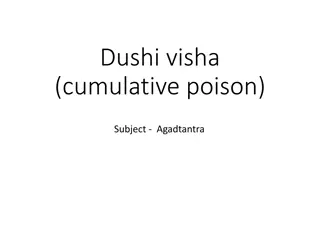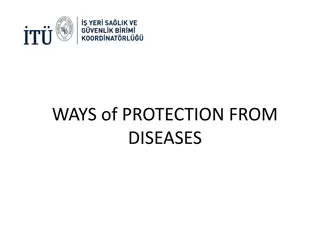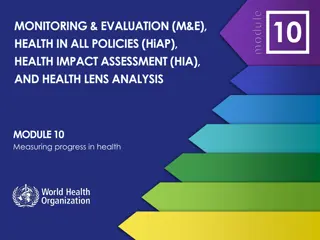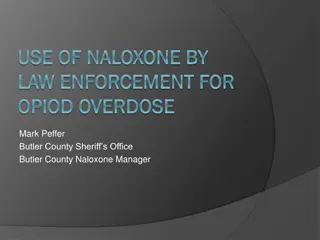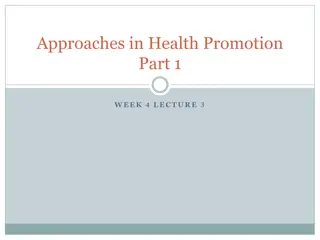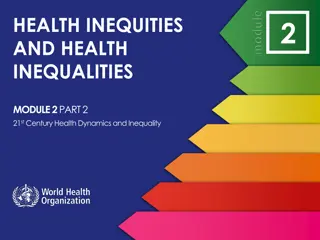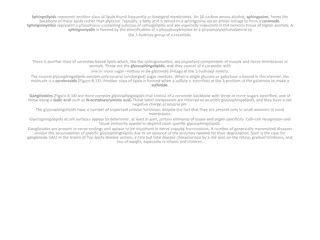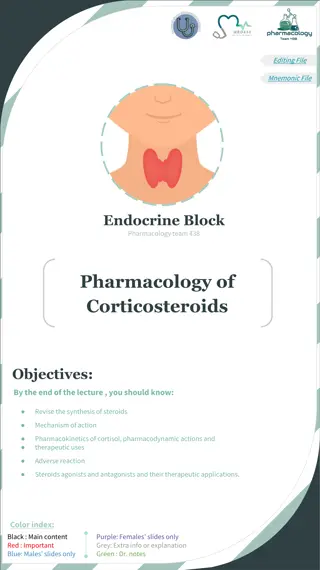Understanding Immunity: Types and Importance in Health
Immunity is the body's defense system against pathogens, consisting of innate and acquired types. Species immunity offers resistance at a species level, while innate immunity provides the initial defense mechanism. Acquired immunity can be active or passive, providing specific protection to individuals. Explore the various facets of immunity and its crucial role in maintaining health.
Download Presentation

Please find below an Image/Link to download the presentation.
The content on the website is provided AS IS for your information and personal use only. It may not be sold, licensed, or shared on other websites without obtaining consent from the author. Download presentation by click this link. If you encounter any issues during the download, it is possible that the publisher has removed the file from their server.
E N D
Presentation Transcript
IMMUNITY IMMUNITY
IMMUNITY INTRODUCTION The term Immunity has traditionally referred to the resistance exhibited by the host towards injury caused by microorganism and their product. However, protection against infectious disease is only one of many consequences of immune response, which in its entirety is concerned with the reaction of the body against any foreign antigen. Immunity is present in an individual from birth and it is the resistance towards infection. It may Inherited or acquired from the mother The state of protection has both less specific and more specific component.
DEFINITION Immunity is defined as the ability to resist pathogens and their toxic products that tent to damage the tissue or organs. The term "immune" is derived from Latin word immunis Which means "exempt from taxes". Today of course, immunity refers to the body's ability to resist infection by pathogenic micro organisms and their products.
TYPES OF IMMUNITY There are mainly two types Innate immunity Acquired immunity Innate immunity are two types Non-specific Specific Non-specific are three types Species Racial Individual Specific are three types Species Racial Individual
Acquired immunity are two types Active Passive Active immunity are two types Natural Artificial Passive Immunity are two types Natural Artificial
INNATE IMMUNITY OR NATIVE IMMUNITY This provides the first line of defence infection. It is resistance to infections that an individual possesses by virtue of her or his genetic and constitutional make-up. It is not affected by prior contact With microorganisms or immunisation. It may be non -specific when it indicates a degree of resistance to infections in general, or specific, where resistance to a particular pathogen is concerned. Innate immunity may be considered at the level of the species, race or individual.
SPECIES IMMUNITY This refers to the total or relative refractoriness to a pathogen, shown by all members of a species. For instance, all human beings are totally unsusceptible to plant pathogens and to many animal pathogens such as rinderpest and distemper. This immunity is something a person obtains by virtue of being a part of the human species. The mechanisms of species immunity are not clearly understood but may be due to physiological and biochemical differences between the tissue of the different host species, which determine whether or not a pathogen can multiply in them.
RACIAL IMMUNITY Within a species different races may show differences in susceptibility to infection, the classic example of which is the high resistance of Algerian sheep to anthrax. Such racial differences are known to be genetic in origin, and by selection and inbreeding, it is possible to develop, at will, races that possess high degree of resistance or susceptibility to various pathogens. It is difficult to demonstrate marked differences in immunity in human races , as controlled breeding is not possible. It has been reported that people of African origin in the USA are more susceptible then Caucasians to tuberculosis. But such comparisons are vitiated by external influences such as differences in socioeconomic levels.
An interesting instance of genetic resistance to Plasmodium falciparum malaria is seen in some parts of Africa and the Mediterranean coast. A hereditary abnormality of red cells (sickling) prevalent in the area confers immunity to infection by the malarial parasite and may have evolved from the survival advantage conferred by it in a malarial environment.
INDIVIDUAL IMMUNITY This is the difference in innate immunity exhibited by different individuals in a race. The genetic basis of individual immunity is evident from studies on the incidence of infectious diseases in twins . It is well documented that homozygous twins exhibit similar degrees of resistance or susceptibility to lepromatous leprosy and tuberculosis. Such correlation is not seen in heterozygous twins.
FACTORS AFFECTING INNATE IMMUNITY AGE HORMONAL INFLUENCES NUTRITION
AGE The very young and the very old are more susceptible to infectious disease than the rest. The fetus in utero is normally protected from maternal infection by the placental barrier. But some pathogens cross this barrier, causing overwhelming infection resulting in fetal death. Some, such as rubella , herpes, cytomegaloviruses and Toxoplasma gondii, lead to congenital malformations. Tinea capitis caused by Microsporum audouinii frequently undergoes spontaneous cure with the onset of puberty.
HORMONAL INFLUENCE Endocrine disorders such as diabetes mellitus, hypothyroidism and adrenal dysfunction are associated with enhanced susceptibility to infection. The high incidence of staphylococcal sepsis in diabetes may be related to the increased level of carbohydrates in tissue. Corticosteroids exert an important influence on the response to infection. They depress the host s resistance by their anti-inflammatory and anti-phagocytic effects and by suppression of antibody formation and hypersensitivity. They also have a beneficial effect in that neutralise the harmful effect of bacterial products such as endotoxins.
NUTRITION The relationship between malnutrition and immunity is complex but, in general, both humoral and cell-mediated immune processes are reduced when there is malnutrition. Cell-mediated immune responses such as the Mantoux test become negative in severe protein deficiency, as in Kwashiorkor. Malarial infection in the famine stricken may not induce fever but once their nutrition improves , clinical malaria develops.
MECHANISMS OF INNATE IMMUNITY Epithelial surfaces- The intact skin and mucous membrane covering the body protect it considerably against invasion by microorganisms. They provide much more than a mechanical barrier. Healthy skin possesses bactericidal activity to which the presence of a high concentration of salt in drying sweat, sebaceous secretions and long chain fatty acids and soaps contribute. When culture of typhoid bacilli placed on healthy skin and on a glass surface are sampled at intervals, the bacteria on the skin are seen to be killled within minutes ,while those on the glass survive for several hours. The bactericidal activity of skin secretions is illustrated by the frequent mycotic and pyogenic infections seen in person who immerse their hands in soapy water for long periods occupationally. Though skin frees itself readily of bacteria deposited on it (transients),its reactions are different to the bacterial flora normally resident on it. Resident flora are not easily removed even by washing and application of disinfectants. Antibacterial substances in blood and tissues- Several substances possessing antibacterial properties have been described in blood and tissues.
Beta lysin, a relatively thermostable substance active against anthrax and related bacilli. Microbial antagonisms- The skin and mucous surfaces have resident bacterial flora which prevent colonisation by pathogens. Cellular factors- Natural defence against the invasion of blood and tissues by microorganisms and other foreign particles is mediated to a large extent by phagocytic cells which ingest and destroy them. Inflammation- Tissue injury or irritation, initiated by the entry of pathogens or other irritants , lead to inflammation, which is an important, non-specific defence mechanism. FEVER- A rise in temperature following infection is a natural defence mechanism. ACUTE PHASE PROTEINS- Infection or injury leads to a sudden increase in the plasma concentration of certain proteins, collectively called acute phage proteins. TOLL-LIKE RECEPTORS- Many of the molecules involved in innate immunity have the property of pattern recognition, the ability to recognise a given class of molecules.
REFERENCES Text book of microbiology by R. Ananthnarayan paniker Text book of microbiology by D.R. Arora Text book of microbiology by C.P. Baweja Text book of microbiology by Satish Gupte Text book of microbiology by A S Sastry
